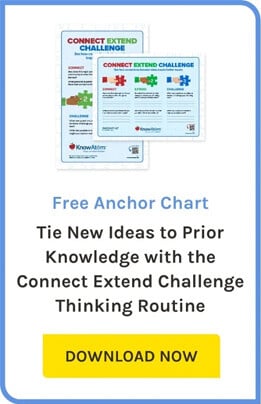Science background gives teachers more in-depth information on the phenomena students explore. Below is an excerpt from this section on food webs.
Lake Michigan Food Web
Zebra mussels were first introduced to the Great Lakes. They have since spread throughout North America. With no natural predators, the population of zebra mussels exploded. There are now millions of zebra mussels living in the Great Lakes. They grow in massive colonies, and up to 700,000 zebra mussels have been found in one square yard of surface area.
The presence of zebra mussels has had a dramatic impact on the Lake Michigan food web. A food web is a visual that shows the network of food chains in an ecosystem. Food chains show specific paths that energy travels as one organism eats another.
Zebra mussels are filter feeders, which means they filter food, primarily phytoplankton, from the water. Those phytoplankton are an essential part of the Lake Michigan food web.
Phytoplankton form the basis of the Lake Michigan food web because they are producers, which means they capture energy directly from the sun to make their own food. Phytoplankton are the most common producers in the Great Lakes. Producers carry out the process of photosynthesis to turn sunlight, water, and carbon dioxide into oxygen and a sugar called glucose that holds chemical energy. Producers always make up the first level of any food web because they are the link between the energy source—the sun—and the rest of the organisms that live in the ecosystem.
Because zebra mussels eat phytoplankton, they are consumers. Consumers are organisms that eat other organisms. Consumers can be herbivores (animals that eat only plants), carnivores (animals that eat other animals), or omnivores (animals that eat plants and other animals). All predators are consumers.
Different Consumers in a Food Web
There are three levels of consumers in a food web. Zebra mussels are in the second level of a food web because they are primary consumers. Primary consumers are the first organisms that get energy by eating producers.
The third level of organisms in a food web consists of secondary consumers, which eat the primary consumers. In Lake Michigan, the lake whitefish is a secondary consumer because it eats water fleas. In some food chains, there is a fourth level, which is made up of tertiary consumers that eat secondary consumers. In Lake Michigan, the walleye is a tertiary consumer because it eats slimy sculpin, which eats water fleas, snails, and amphipods, all of which eat producers.
Decomposers are their own level in a food web. Decomposers are organisms that feed on dead organic waste. As organic matter decomposes, the nutrients within it, including nitrogen and carbon, are recycled back into the environment. Chironomids are larval insects and worms that decompose organic matter in Lake Michigan, cycling the nutrients held within the organic matter back into the ecosystem.
Types of Interactions
The massive colonies of zebra mussels are particularly damaging to the local food web because each mussel requires food for energy to grow and develop. Because most of the native species don’t have adaptations to help them compete with the zebra mussels, the mussels are able to out-compete many of them. Competitive interactions between organisms occur whenever two or more organisms require the same limited resource, such as phytoplankton.
The absence of phytoplankton for other primary consumers changes the flow of energy throughout the food web because it no longer flows up the food chain to the larger fish that depend on different primary consumers for food. The result is a loss of native fish species, and that impacts many people who depend on fishing for their livelihood. Because they are a non-native species that disrupt the flow of energy within an ecosystem, zebra mussels are an invasive species.
Not all interactions with the zebra mussel are bad. Some organisms benefit from the presence of the zebra mussels. For example, some parasites survive by living on the mussels. In a parasitic interaction, the parasite depends on another living organism (its host) and survives by taking the host’s nutrients.
Zebra mussels have also helped to filter out pollutants from the water as they strain nutrients, making the water cleaner. However, most people agree that invasive zebra mussels cause more harm than good. They make ecosystems less diverse, with fewer kinds of organisms able to survive. This can affect people as well, especially those who depend on fishing for their livelihood. Zebra mussels also clog pipes because they grow in such large colonies.
Getting rid of existing mussels is challenging. It is expensive and time-consuming. This is where Popeye and other mussel- sniffing dogs come in. Their job is to detect mussels before they invade a waterway so they don’t get the chance to disrupt the local food webs.


.png?width=200&height=263&name=Screenshot%20(95).png)
.png?width=200&height=263&name=Screenshot%20(96).png)
.png?width=200&height=261&name=Screenshot%20(97).png)
.png?width=251&height=330&name=Screenshot%20(98).png)


